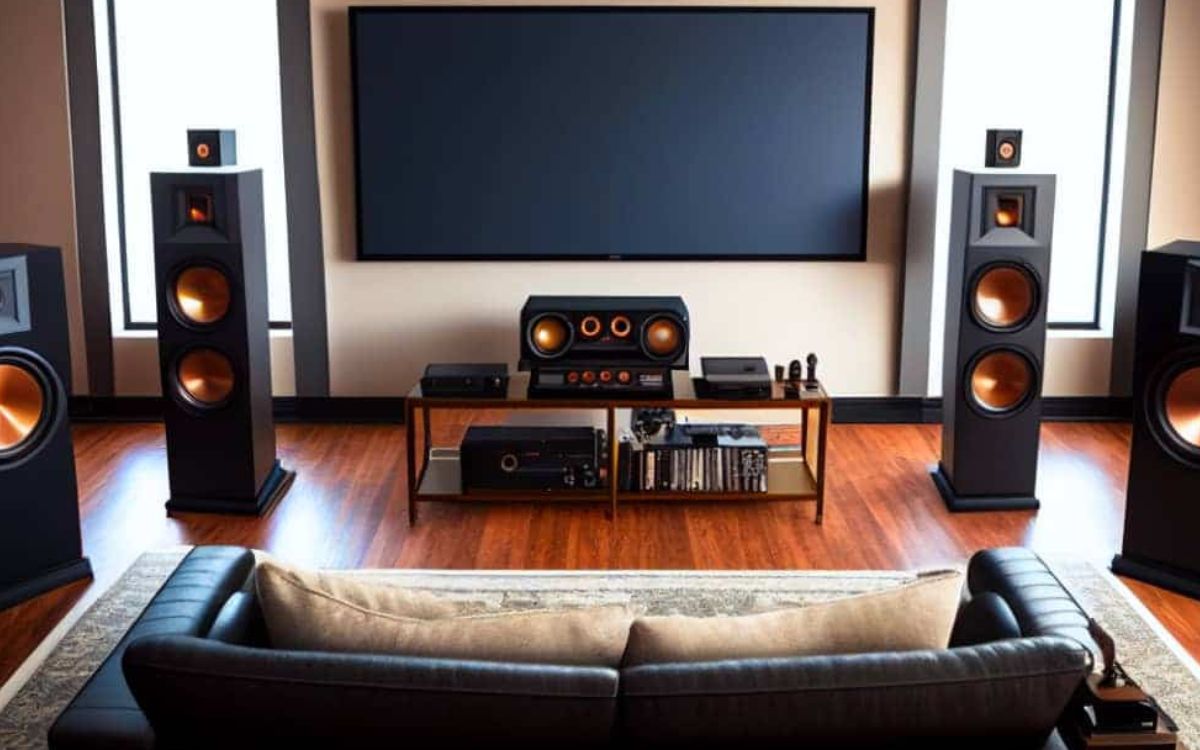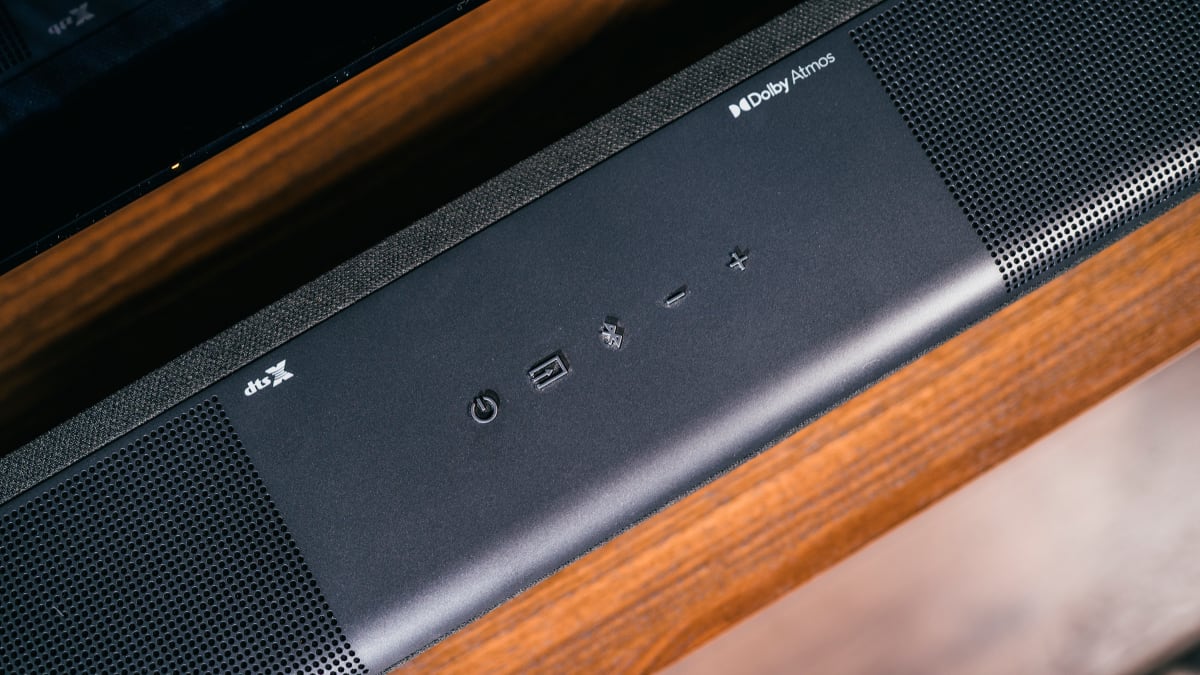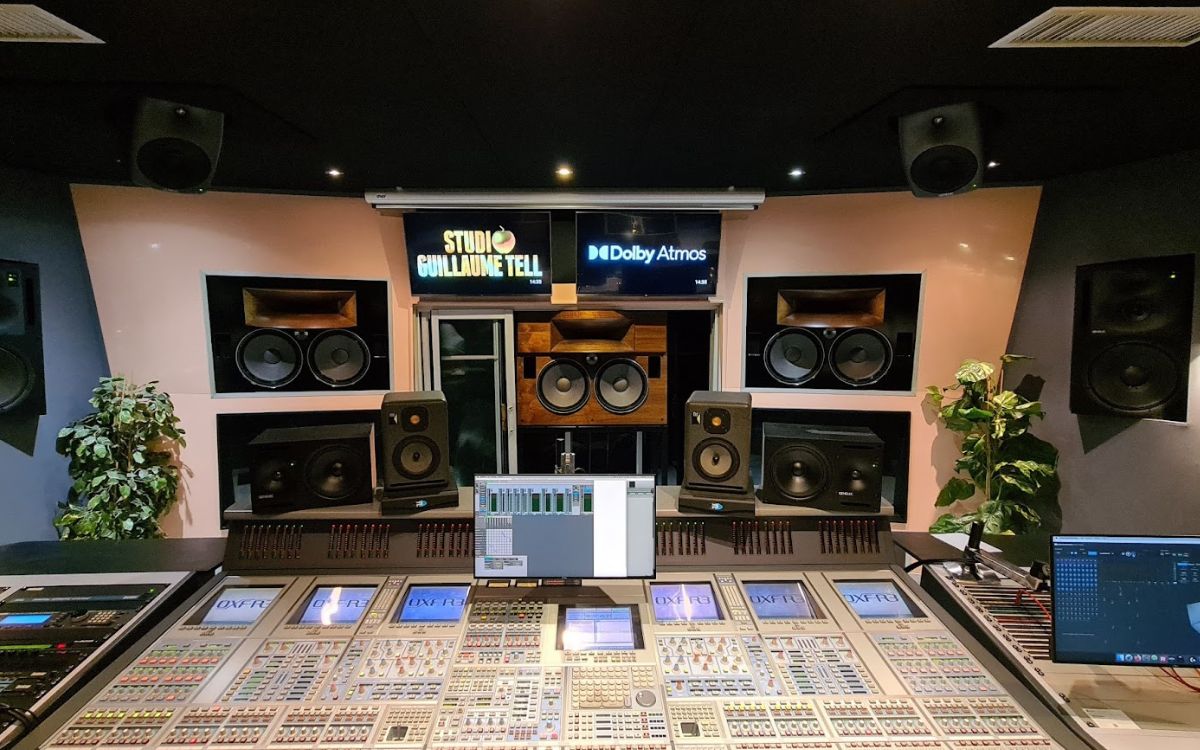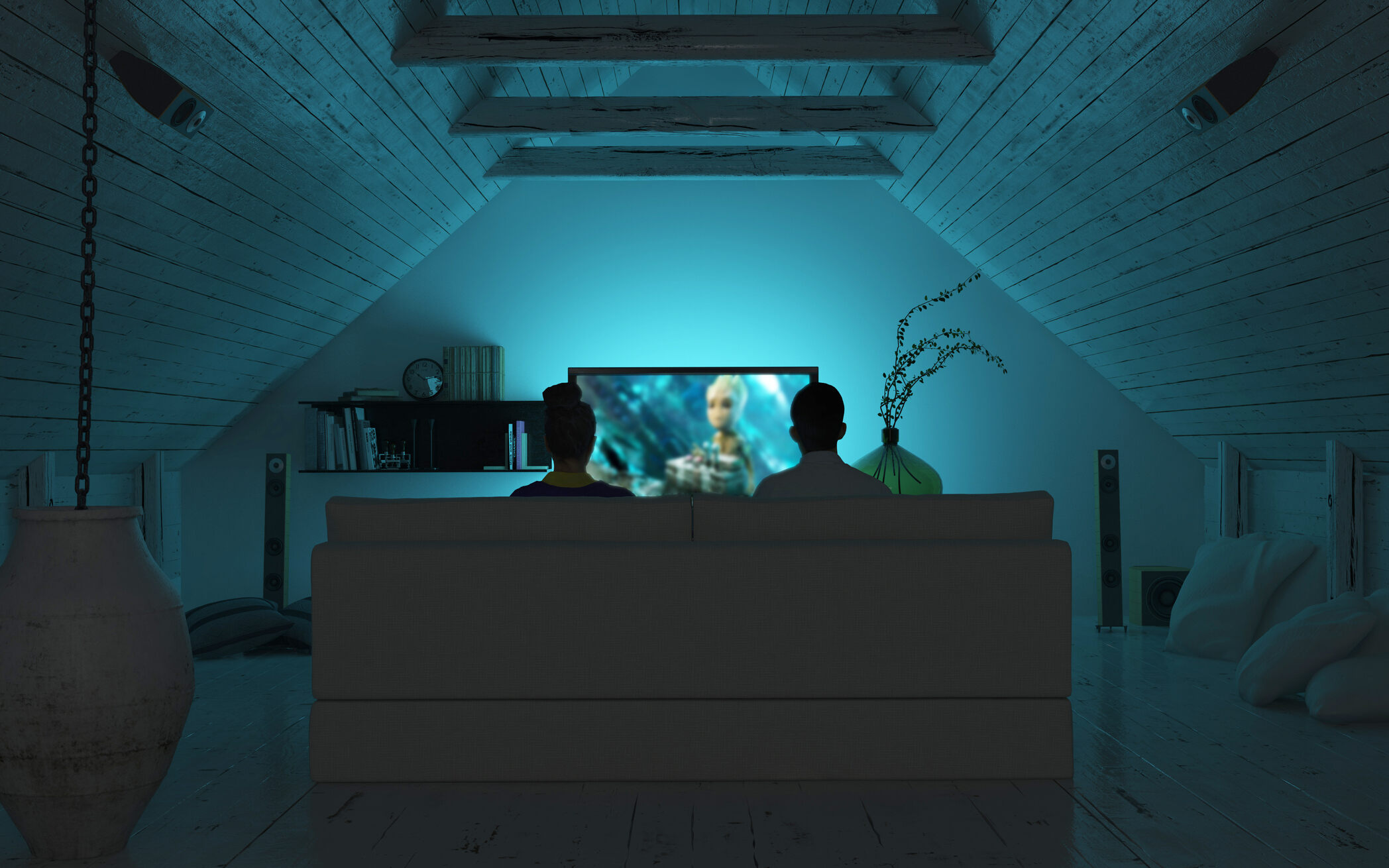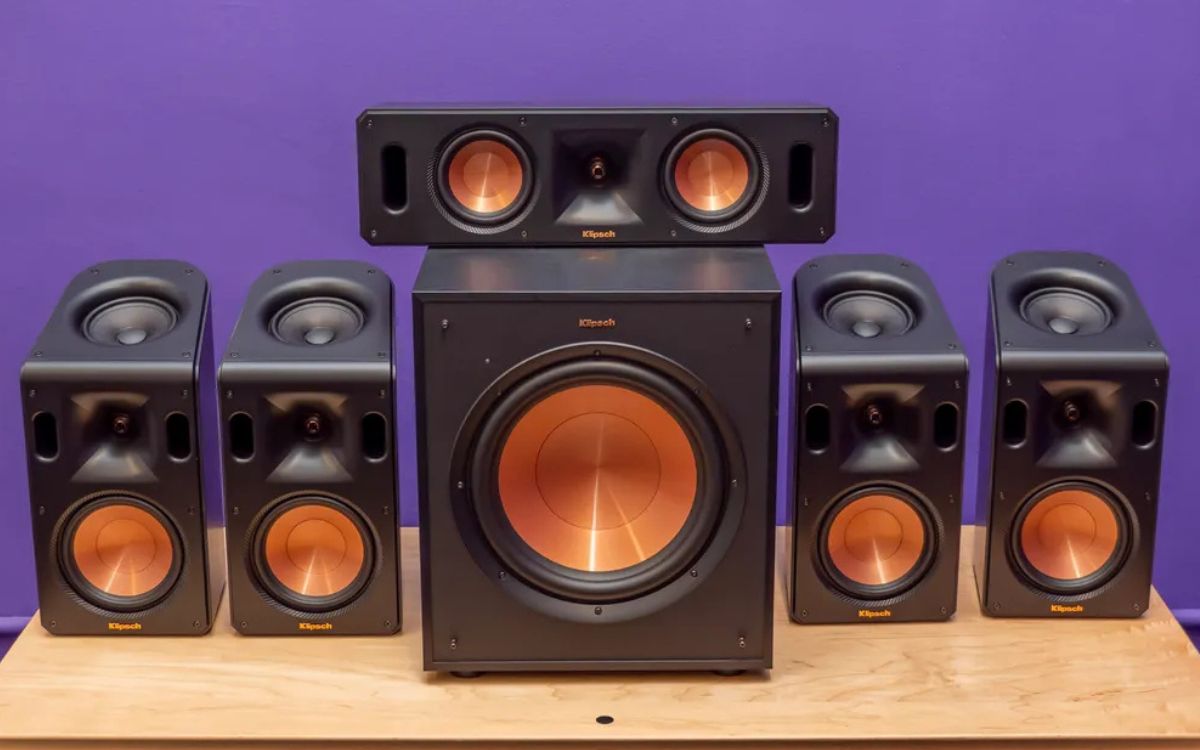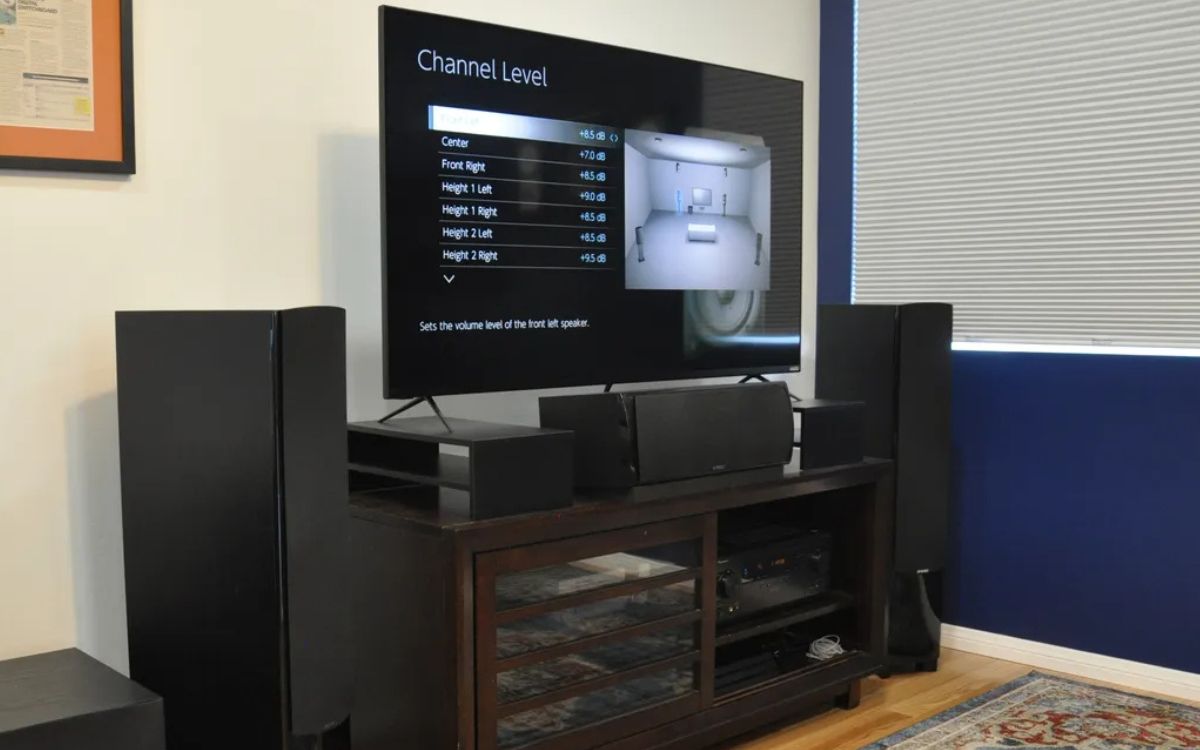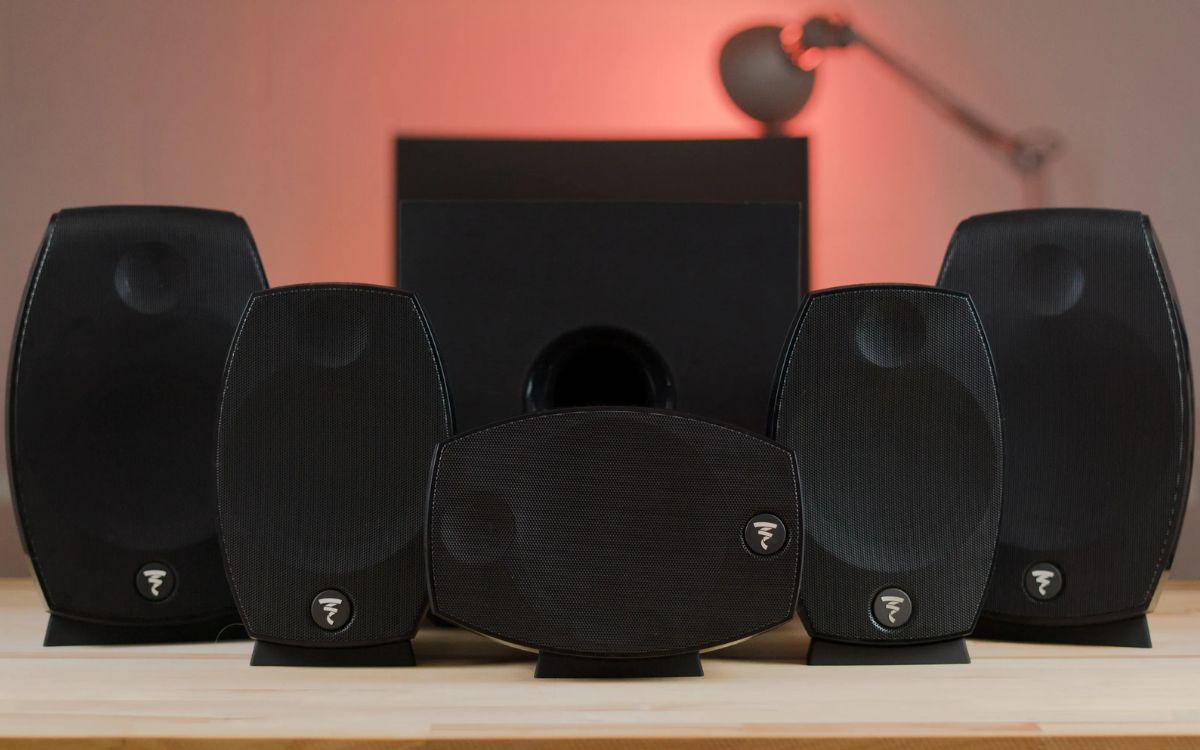Home>Production & Technology>Surround Sound>What Is 7.2 Surround Sound


Surround Sound
What Is 7.2 Surround Sound
Modified: February 18, 2024
Discover the immersive audio experience of 7.2 surround sound, delivering crystal-clear sound and pinpoint accuracy. Unlock the true power of your favorite movies and music with surround sound technology.
(Many of the links in this article redirect to a specific reviewed product. Your purchase of these products through affiliate links helps to generate commission for AudioLover.com, at no extra cost. Learn more)
Table of Contents
- Introduction
- Understanding Surround Sound
- What is 7.2 Surround Sound?
- Components of a 7.2 Surround Sound System
- Benefits and Advantages of 7.2 Surround Sound
- How to Set up a 7.2 Surround Sound System
- Popular Brands and Models of 7.2 Surround Sound Systems
- Troubleshooting Common Issues with 7.2 Surround Sound
- Conclusion
Introduction
Surround sound has revolutionized the way we experience audio in our homes. It adds depth, realism, and an immersive quality to our favorite movies, music, and games. While most people are familiar with the concept of surround sound, there are different configurations available, each offering a unique audio experience. One of the most popular configurations is 7.2 surround sound.
In this article, we will delve into the world of 7.2 surround sound and explore what it entails. We will look at its components, benefits, and how to set up a 7.2 surround sound system. Whether you are a movie buff, audiophile, or gaming enthusiast, understanding 7.2 surround sound can take your audio experience to the next level.
But first, let’s start with a brief overview of surround sound itself. Surround sound is a technology that uses multiple audio channels to create a spatial sound field. It aims to replicate the way sound is heard naturally, making you feel like you’re in the middle of the action. By delivering audio from different directions and distances, it creates a more immersive and realistic audio experience.
While there are various configurations of surround sound, the most common ones are denoted by numbers and dots. For example, 2.0 denotes two speakers for stereo sound, 5.1 refers to five speakers and a subwoofer, and 7.1 signifies seven speakers and a subwoofer. Today, we will focus specifically on the 7.2 configuration.
Understanding Surround Sound
Before diving into the specifics of 7.2 surround sound, it’s important to have a solid understanding of the basics of surround sound technology. At its core, surround sound aims to create a multidimensional audio experience by distributing sounds to different speakers placed strategically around the listener.
The most common surround sound formats are denoted by numbers, representing the number of main speakers and a subwoofer. For example, 5.1 surround sound consists of five speakers – front left, center, front right, surround left, and surround right – and one subwoofer. The “5” corresponds to the main speakers, while the “.1” indicates the presence of a subwoofer for low-frequency sound reproduction.
In a surround sound system, each speaker is responsible for playing specific audio channels to create an immersive soundstage. The front speakers handle the dialogue and main audio elements, while the surround speakers provide ambient and directional sounds. The subwoofer, on the other hand, delivers deep bass frequencies, adding depth and power to the overall audio experience.
To further enhance the surround sound effect, audio engineers use various techniques, such as panning, to direct sound to specific speakers. This creates a sense of movement and helps to localize sounds in the virtual soundstage.
Additionally, surround sound systems often incorporate audio codecs, such as Dolby Digital or DTS, which provide high-quality audio compression and encoding. These codecs ensure that the audio is delivered in its intended format, maintaining the fidelity and spatial characteristics of the original sound recording.
The overall goal of surround sound is to transport the listener into the heart of the action. Whether you’re watching a blockbuster movie, playing a video game, or enjoying your favorite music, surround sound adds an extra layer of immersion and excitement to the audio experience.
Now that we have a general understanding of surround sound, let’s explore the specifics of 7.2 surround sound and how it takes audio immersion to the next level.
What is 7.2 Surround Sound?
7.2 surround sound is an advanced audio setup that offers an even more immersive sound experience compared to traditional surround sound configurations. As the name suggests, it consists of seven main speakers and two subwoofers, providing a total of nine audio channels.
The seven main speakers in a 7.2 surround sound system are divided into three front speakers, two surround speakers, and two height or overhead speakers. The front speakers include a left, center, and right speaker, which handle the majority of the audio. The two surround speakers are positioned to the sides or the rear of the listener, creating a wraparound sound effect. The two height or overhead speakers are placed above the listener, adding vertical audio cues for a more three-dimensional soundstage.
The addition of two subwoofers in a 7.2 setup allows for enhanced low-frequency performance. The subwoofers are responsible for reproducing deep bass sounds, adding impact and realism to explosions, rumbling engines, and other low-frequency audio effects.
With 7.2 surround sound, you can truly immerse yourself in the audio environment of movies, music, and games. The additional speakers and subwoofers create a more spacious, dynamic, and lifelike sound experience that transports you right into the heart of the action.
It’s important to note that not all content is specifically mixed for 7.2 surround sound. However, even non-native surround sound content can still benefit from the configuration. The audio can be upscaled and processed to make use of the available speakers, resulting in a more expansive and detailed soundstage.
Now that we understand what 7.2 surround sound is, let’s take a closer look at the components required to set up a 7.2 surround sound system.
Components of a 7.2 Surround Sound System
Setting up a 7.2 surround sound system requires several key components to deliver an exceptional audio experience. Here are the essential components you’ll need:
- Receiver or Amplifier: This is the central hub of your surround sound system. The receiver or amplifier receives audio signals from various sources and distributes them to the appropriate speakers. Make sure the receiver you choose supports 7.2 channel output.
- Main Speakers: A 7.2 setup includes three main speakers: left, center, and right. These speakers handle the primary audio, including dialogue and sound effects. Look for high-quality speakers that can reproduce a wide frequency range and provide clear and detailed sound.
- Surround Speakers: Two surround speakers are an integral part of a 7.2 configuration. These speakers are placed to the sides or rear of the listening area to create an immersive surround sound experience. They help to reproduce ambient sounds, background effects, and sound effects from off-screen sources.
- Height or Overhead Speakers: Adding two height or overhead speakers to your setup takes the audio immersion to the next level. These speakers are positioned above the listener to provide vertical sound cues and create a more three-dimensional soundstage. They enhance the sense of height and depth in movies, music, and games.
- Subwoofers: In a 7.2 surround sound system, two subwoofers are utilized to reproduce deep bass frequencies. They add weight, impact, and realism to explosions, thunder, and other low-frequency effects. Look for subwoofers with sufficient power and low-frequency response to deliver a satisfying bass experience.
- Audio Sources: Connect your audio sources, such as a Blu-ray player, gaming console, or streaming device, to the receiver. Make sure your sources support surround sound formats like Dolby Digital or DTS to fully utilize the capabilities of your 7.2 system.
- Cables and Wires: To connect all the components in your 7.2 setup, you’ll need high-quality audio cables and wires. Ensure that you have the necessary cables, such as HDMI cables for audio and video signals, speaker wires for connecting the speakers to the receiver, and any other cables specific to your setup.
When selecting components for your 7.2 surround sound system, consider factors such as audio quality, brand reputation, room size, and your personal preferences. Investing in high-quality components will ensure a more immersive and enjoyable audio experience.
Now that we have covered the components of a 7.2 surround sound system, let’s explore the benefits and advantages of opting for this advanced audio configuration.
Benefits and Advantages of 7.2 Surround Sound
Opting for a 7.2 surround sound system offers a range of benefits and advantages that enhance your audio experience. Here are some key reasons why you should consider investing in a 7.2 setup:
- Immersive Audio Experience: With seven main speakers and two subwoofers, a 7.2 configuration creates a truly immersive audio experience. The additional speakers and subwoofers fill your room with detailed sound from all directions, making you feel like you’re part of the action.
- Enhanced Soundstage: The presence of additional speakers in a 7.2 setup expands the soundstage, making audio sources feel more spacious and realistic. The use of height or overhead speakers adds a vertical dimension, creating a more three-dimensional audio environment.
- Improved Localization: With more speakers strategically placed around the room, sound localization becomes more precise in a 7.2 surround sound system. This means you can easily pinpoint the direction from which specific sounds are coming, enhancing the realism and immersion of the audio.
- Deeper Bass: The use of two subwoofers in a 7.2 setup allows for even deeper and more powerful bass reproduction. This greatly enhances the impact of low-frequency effects, such as explosions and rumbling thunder, adding a visceral dimension to your audio experience.
- Flexibility and Scalability: A 7.2 system provides flexibility and scalability in your setup. If you have a smaller room, you can start with a basic 5.1 setup and later add the extra speakers and subwoofers for a 7.2 configuration. This allows you to adapt and upgrade your system according to your needs and budget.
- Compatibility with Modern Content: Many modern movies, TV shows, video games, and music recordings are mixed with surround sound formats like Dolby Digital or DTS. A 7.2 system is fully compatible with these formats, allowing you to experience the audio as intended by the creators.
- Room-Filling Audio: With multiple speakers placed strategically around the room, a 7.2 system delivers room-filling audio. This eliminates audio dead zones and ensures that everyone in the room can enjoy a consistent and immersive sound experience.
Overall, a 7.2 surround sound system provides a heightened level of immersion, realism, and audio quality. Whether you’re watching movies, listening to music, or playing games, the benefits and advantages of a 7.2 setup can truly elevate your audio experience to new heights.
Next, we will explore the steps involved in setting up a 7.2 surround sound system to help you get started on your audio journey.
How to Set up a 7.2 Surround Sound System
Setting up a 7.2 surround sound system may seem intimidating at first, but with the right approach and a little patience, it can be a rewarding experience. Here’s a step-by-step guide to help you set up your 7.2 surround sound system:
- Plan Your Room: Start by evaluating your room and deciding on the placement of your speakers. Consider factors such as the size and shape of the room, seating position, and any obstacles that may affect the sound. Ideally, the front speakers should be equidistant from the seating area, and the surround speakers should be strategically positioned to the sides or rear.
- Connect the Receiver: Begin by connecting your receiver or amplifier to your audio sources, such as your Blu-ray player or gaming console. Use HDMI cables for both audio and video signals to ensure the best possible quality. Connect the receiver to your TV or projector for video output.
- Set up the Front Speakers: Position the left, center, and right speakers in their designated locations. Ensure that the speakers are at ear level when seated in your listening area. Use speaker stands or wall mounts if necessary. Connect each speaker to the corresponding speaker terminals on the receiver using high-quality speaker wires.
- Place the Surround Speakers: Position the surround speakers to the sides or rear of your listening area. Aim for an angle of around 90 to 110 degrees between the front and surround speakers. Mount them on walls or use stands to achieve the optimal placement. Connect the surround speakers to the appropriate speaker terminals on the receiver.
- Install the Overhead Speakers: If you have height or overhead speakers, position them above the listening area. The exact placement will depend on the specific speaker design and your room’s layout. Mount them on the ceiling or use speaker brackets for secure installation. Connect the overhead speakers to the receiver using speaker wires.
- Set up the Subwoofers: Place the two subwoofers in different locations in the room for optimal bass distribution. Experiment with different positions to find the best balance of bass response. Subwoofers can be placed near the front speakers or in corners, as low-frequency sound is non-directional. Connect each subwoofer to the subwoofer output on the receiver using subwoofer cables.
- Perform Audio Calibration: Most modern receivers have an automatic speaker calibration feature. Follow the on-screen instructions to calibrate your system. This involves measuring the speaker distances, setting the levels, and configuring the crossover frequency for seamless integration between the speakers and subwoofers.
- Test and Fine-Tune: Once everything is properly connected and calibrated, test your setup with various sources. Play a movie, listen to music, or play a game that supports surround sound. Take note of any issues, such as unbalanced audio or poor sound localization, and make necessary adjustments to improve your listening experience.
Remember that every room is different, and you may need to experiment with speaker placement and calibration settings to achieve the best sound quality. Take your time and trust your ears to fine-tune your 7.2 surround sound system to your liking.
Now that you have set up your 7.2 surround sound system, let’s explore some popular brands and models that offer excellent options for immersive audio.
Popular Brands and Models of 7.2 Surround Sound Systems
When it comes to choosing a 7.2 surround sound system, there are several reputable brands and models to consider. These brands are known for their commitment to quality, performance, and innovative audio technologies. Here are some popular options:
- Denon: Denon is a well-respected brand in the audio industry, offering a range of high-quality surround sound receivers with 7.2 channel support. Their receivers often come equipped with advanced features like Dolby Atmos and DTS:X for a truly immersive audio experience.
- Onkyo: Onkyo is known for its reliable and feature-rich AV receivers. They offer a variety of models with 7.2 channel capabilities, delivering excellent audio performance and compatibility with the latest surround sound formats.
- Yamaha: Yamaha is a trusted name in audio and their AV receivers are renowned for their sound quality and versatility. Many of their models support 7.2 channel configurations, including Dolby Atmos and DTS:X compatibility, to provide a captivating audio experience.
- Sony: Sony is synonymous with quality electronics, and their AV receivers are no exception. Their 7.2 channel receivers offer a range of features, including support for high-resolution audio and wireless connectivity options for added convenience.
- Marantz: Marantz specializes in premium audio equipment, and their AV receivers are known for their exceptional sound quality and craftsmanship. Their 7.2 channel receivers incorporate advanced audio technologies and are designed to deliver an immersive and precise audio experience.
- Pioneer: Pioneer is another reputable brand that offers a wide range of surround sound receivers with 7.2 channel support. Their receivers are known for their reliability and user-friendly features, making them a popular choice among home theater enthusiasts.
When considering a specific model, it’s important to assess your needs, budget, and desired features. Look for receivers that match your specific requirements, such as the number of HDMI inputs, audio processing capabilities, and connectivity options.
It’s always recommended to read reviews, compare specifications, and even listen to demos if possible, to ensure that you choose a surround sound system that meets your expectations and delivers the audio performance you desire.
With a high-quality 7.2 surround sound system from one of these renowned brands, you can enjoy an immersive audio experience that enhances your movie nights, gaming sessions, and music listening.
Now that we’ve explored some popular brands and models, let’s address some common issues you may encounter with your 7.2 surround sound system and how to troubleshoot them.
Troubleshooting Common Issues with 7.2 Surround Sound
While a 7.2 surround sound system can provide an incredible audio experience, there may be times when you encounter some common issues. Here are a few common problems and troubleshooting tips to help you resolve them:
- Audio Imbalance: If you notice that the sound is unbalanced, with certain channels louder or softer than others, check the speaker calibration settings on your receiver. Ensure that each speaker is properly configured and adjusted for the correct sound level. You may need to rerun the calibration process to correct the imbalance.
- No Sound from Subwoofers: If you’re not getting any sound from the subwoofers, first ensure that they are properly connected to the subwoofer outputs on your receiver. Double-check the volume level and crossover settings on both the receiver and the subwoofers. Also, make sure that the subwoofers are powered on and not in standby mode.
- Poor Sound Localization: If you’re having trouble localizing sounds, ensure that the speakers are positioned correctly. The front speakers should be at ear level when seated in your listening area, and the surround speakers should be properly angled and placed to the sides or rear. You may need to adjust the speaker positions or experiment with different angles to improve sound localization.
- No Audio from Height or Overhead Speakers: If you’re not getting any sound from the height or overhead speakers, check the speaker wiring and ensure that they are connected to the appropriate speaker outputs on your receiver. Also, verify that your receiver is set to output audio to these speakers. Some receivers have specific settings to enable the use of height or overhead speakers.
- Audio Dropouts or Distortion: If you experience audio dropouts or distortion, check for loose or damaged cables. Ensure that all connections are secure and that you are using high-quality cables. Additionally, make sure that the receiver is not overheating, as this can cause audio issues. Ensure proper ventilation and consider placing a fan near the receiver if necessary.
- Compatibility Issues: If you’re having compatibility issues with certain audio sources or formats, make sure that your receiver is up to date with the latest firmware. Check the manufacturer’s website for any available updates and instructions on how to install them. Additionally, ensure that your audio sources are set to output the correct surround sound format supported by your 7.2 system.
If you’re still encountering issues after trying these troubleshooting tips, it may be beneficial to consult the user manual for your specific receiver and speakers. You can also reach out to the manufacturer’s customer support for further assistance and guidance.
Remember, patience and persistence are key when troubleshooting audio systems. With a bit of troubleshooting effort, you can resolve common issues and enjoy the full immersive potential of your 7.2 surround sound system.
Now, let’s wrap up our discussion on 7.2 surround sound.
Conclusion
In conclusion, 7.2 surround sound brings a new level of immersion and realism to your audio experience. With its seven main speakers, two subwoofers, and potentially height or overhead speakers, a 7.2 configuration creates a truly captivating soundstage that envelops you in sound from all directions.
Understanding the basics of surround sound is crucial before delving into the specifics of 7.2 surround sound. By distributing sound to multiple speakers, surround sound technology aims to recreate a natural audio environment and make you feel like you’re part of the action.
Setting up a 7.2 system requires careful planning, proper speaker placement, and effective calibration. It’s important to choose high-quality components from reputable brands to ensure the best performance and compatibility.
Some of the notable brands in the 7.2 surround sound market include Denon, Onkyo, Yamaha, Sony, Marantz, and Pioneer. These brands offer a range of options with advanced features and reliable performance to suit various preferences and budgets.
While troubleshooting common issues may be necessary at times, the rewards of a well-calibrated 7.2 setup are worth the effort. From an immersive audio experience to improved sound localization and deep bass reproduction, 7.2 surround sound can transform your home theater, gaming sessions, and music listening.
So, if you’re ready to take your audio experience to new heights, consider investing in a 7.2 surround sound system. With its ability to immerse you in sound, it will transport you to the heart of your entertainment and offer a truly captivating audio journey.
Get ready to feel every explosion, hear every instrument, and experience audio like never before with 7.2 surround sound!

